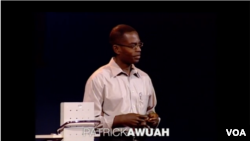This fall semester, as millions of U.S. college students embarked on another academic year, they were joined on campus by more than a million students from overseas.
This large number reflects not only the sweeping political, economic, and social changes across the world over the past 50 years, but also the ongoing strength of our higher education institutions and our long history of welcoming and educating students from around the world. Educating students from abroad truly makes a difference in the world, not only for the students themselves but also for the United States.
As less than 2 percent of U.S. students pursue a study-abroad experience prior to graduation, the presence of international students on U.S. campuses is critical for providing a better understanding of the world, its nations and cultures.
But when looking at the numbers more closely, the increases in the past 10 years have been largely driven by a handful of countries and by students and families that can afford the comparatively high cost of a U.S. college education.
Thirty years ago, the top three countries sending students to study in the United States were Taiwan, Malaysia, and Nigeria, but students from those countries made up just 18 percent of the total; today, the top three sending countries are China, India, and South Korea, and make up 50 percent of the total.
Whether students are coming here to study from Malaysia or China is not a result of any proactive national strategy on our part, but largely a result of external geopolitical and economic factors. As a result, we may not be educating enough students from as wide a variety of cultures, socioeconomic backgrounds and perspectives as we should.
Take, for example, Patrick Awuah of Ghana. Patrick received an undergraduate scholarship to attend Swarthmore College in Pennsylvania. After graduating, he worked for several years as an engineer at Microsoft in Seattle, but soon felt the pull to return home and give back.
Inspired by his educational experience at Swarthmore, in 2002, Patrick established Ashesi University in Ghana, a liberal arts institution focused on critical thinking and problem solving, with the goal of developing a new generation of leaders and entrepreneurs in Africa.
For his efforts, Patrick received a MacArthur “genius grant” last year. At the time Patrick attended Swarthmore, more than 33,000 students from sub-Saharan Africa were studying in the United States. Thirty years later, that figure remains unchanged.
The United States also offers academic opportunities for students from abroad who have none at home. Several years ago, Indian student Srikanth Bolla became the first blind international student to study at the Massachusetts Institute of Technology. Rejected due to his blindness by his top choice in his home country, the Indian Institute of Technology, he applied to schools in the United States, and was accepted by Stanford, Berkeley, Carnegie Mellon, and MIT, where he ultimately chose to attend on scholarship.
Today, Srikanth is back in India running a non-profit providing support services to students with disabilities and a successful paper-products company that offers meaningful employment to disabled workers.
Educating students from a wider number of countries and backgrounds is one of the most powerful tools of diplomacy and development we have. That is why NAFSA is urging the next president to lead a proactive national initiative focused on international student diversity on U.S. college campuses to ensure we reach more students like Patrick and Srikanth. A national initiative would seek to better leverage existing U.S. government programs, identify current best practices used by U.S. higher education in reaching and supporting a wider pool of applicants, as well as solicit support from the private sector, as markets outside of the developed world will constitute the bulk of economic growth over the next 20 years.
If we believe that diversity and equity in U.S. higher education enrollment is essential to the well-being of our country, then this also must apply to the international students we educate at our colleges and universities. This fall, there will be a few Patricks and Srikanths in classrooms on our campuses, but having more will do us and the world a lot of good.
This was written by Marlene M. Johnson, Executive Director and CEO of the National Association of International Educators (NAFSA).






